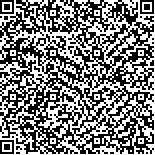下载中心
优秀审稿专家
优秀论文
相关链接
摘要

本文基于引力模型,对北京一号对地观测小卫星数据渤海区域进行海洋锋面检测。针对北京一号小卫星数据的特点,选择红波段作为实验波段,并选择渤海湾南岸水色锋和辽东湾东岸辐射沙脊两个实验区域。算法首先对数据进行线性拉伸,波段运算等预处理,突出锋面信息,其中,拉伸区间由图像直方图确定,接着应用引力模型对预处理后的数据进行锋面检测。实验结果表明,本文算法能够对两个实验区域的锋面进行检测,得到的锋面信息连续、突出,证明了算法的有效性;针对北京一号对地观测小卫星数据,本文算法相比于传统锋面检测算法,能够得到更加连续的锋面信息,并能较好抑制近岸泥沙对锋面检测的干扰。
Fronts in the Bohai sea are detected based on BJ-1 small satellite data using a gravitation model.We select the red band as the experimental band due to the characters of small satellite data. In addition, the fronts south of the Bohai Bay and east of the Liaodong Bay are chosen as experimental areas because they are both eligible for front detection. In the experiments, a linear stretch and band computation are first applied to data in order to protrude front information. The stretch intervals are set according to histograms. Then, utilizing a gravitation model, the fronts can be extracted from preprocessed data,and the results show that fronts can be successfully extracted from BJ-1 small satellite data usingthe gravitation model. The detected fronts are continuous and obvious. Compared with traditional front detection algorithms, the proposed algorithm can not only detect continuous and conspicuous fronts, but can also suppress noises.

